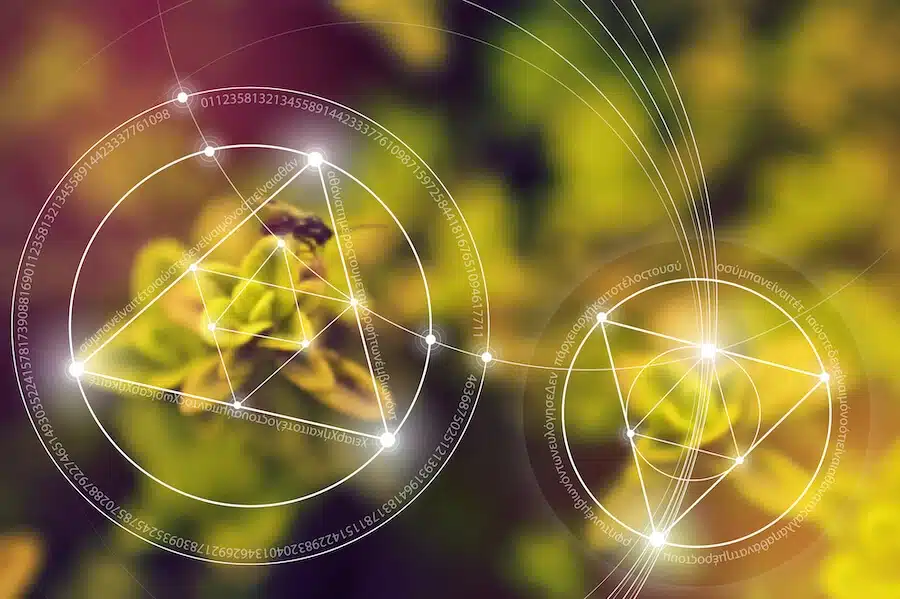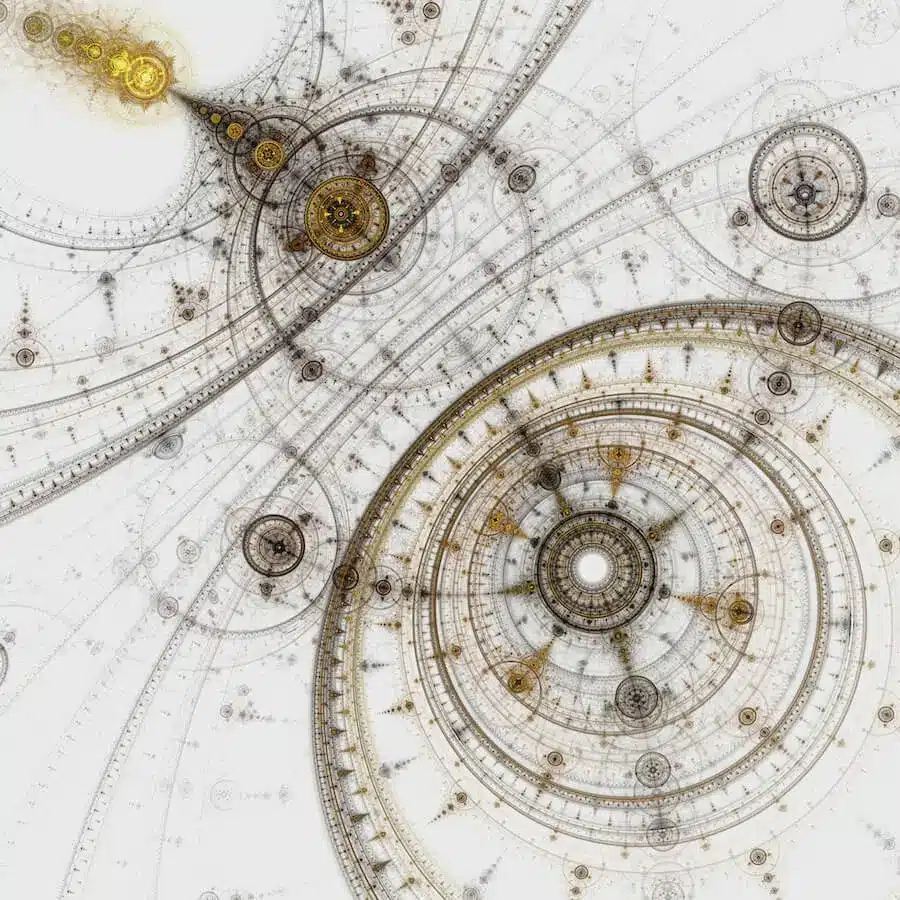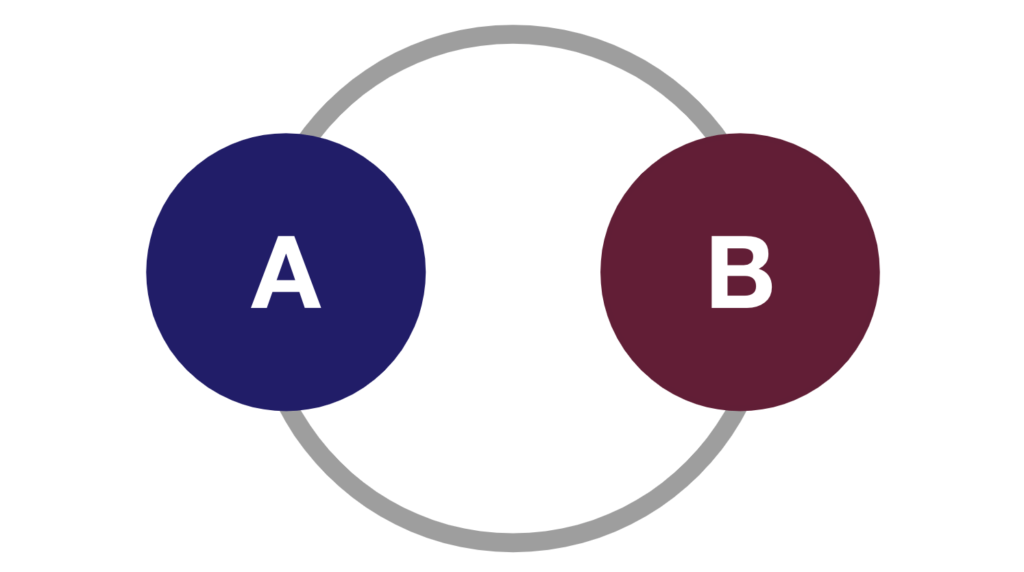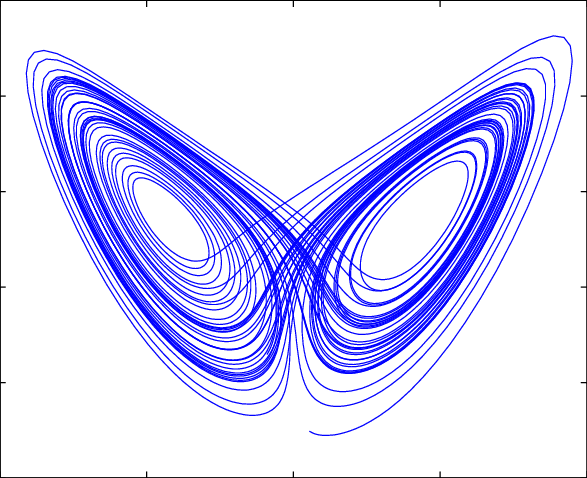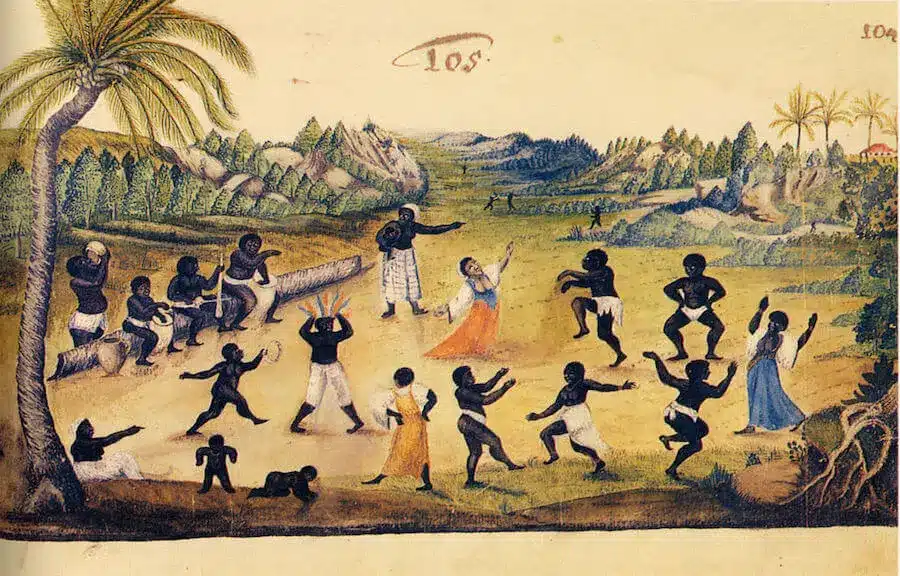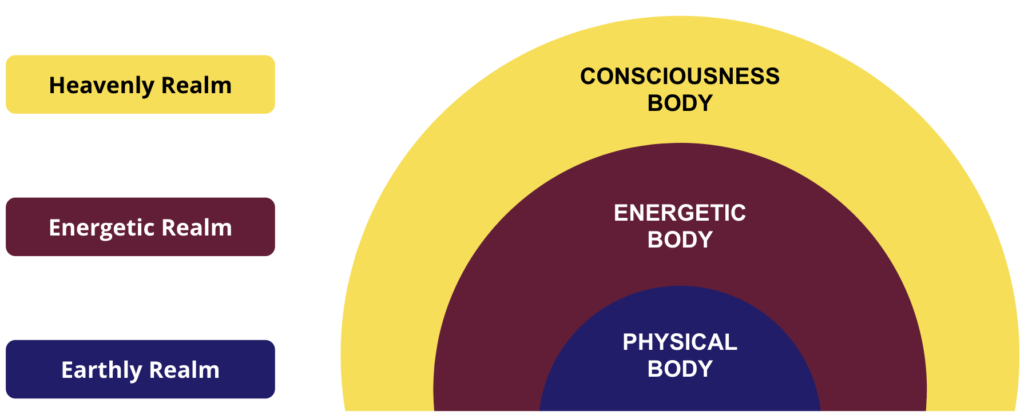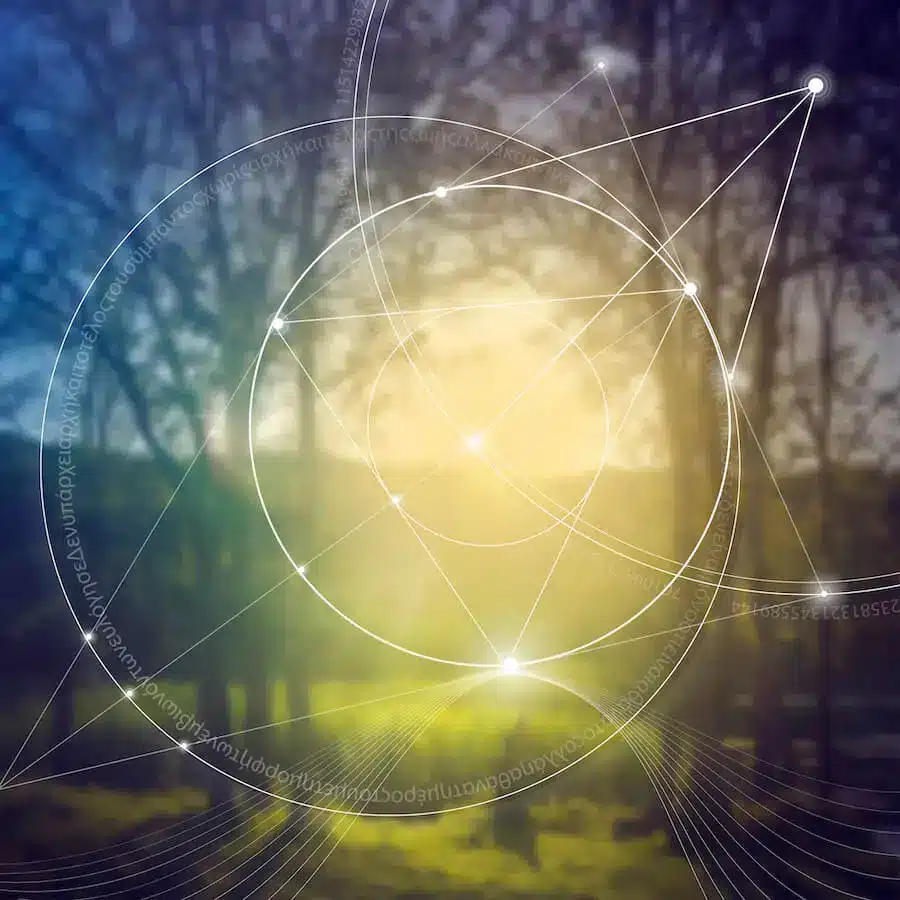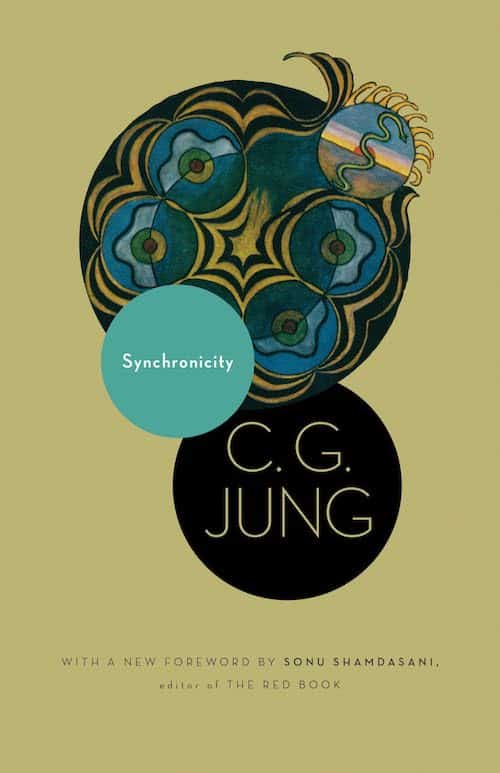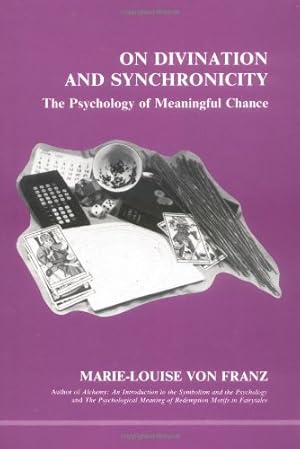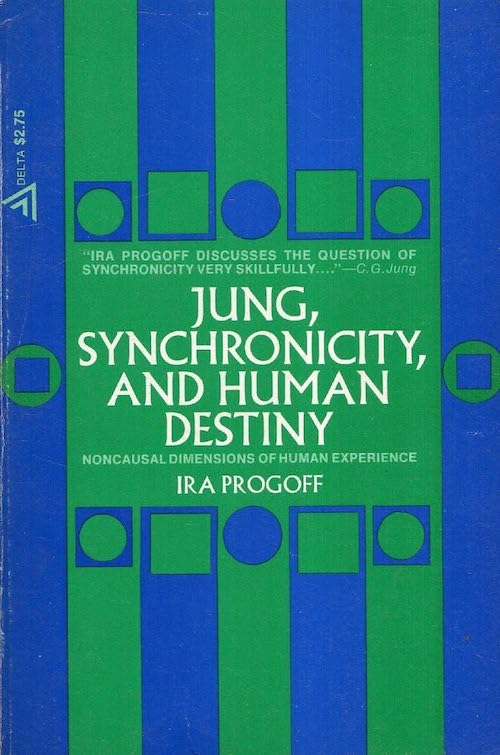What is synchronocity?
What is the meaning of synchronistic events?
Is there a scientific explanation for these meaningful occurrences? Is it even a real phenomenon?
Can synchronicities have a spiritual meaning?
We’ll address all of these questions and much more in this in-depth guide.
Let’s dive in …
What is Synchronicity?
Synchronicity is a concept developed by Swiss psychiatrist Carl Gustav Jung to describe meaningful coincidences.
It occurs when an event in the external world mirrors an internal issue.
Jung explains:1Carl Gustav Jung, Collected Works Vol 8, Page 441.
Synchronicity means the simultaneous occurrence of a psychic state with one or more external events, which appear as meaningful parallels to the momentary subjective state.
For Jung, a “psychic” state refers to anything going on in your subjective experience, including your thoughts, feelings, attitudes, and impulses.
So, synchronicities, according to Jung, require two events to happen simultaneously or in parallel:
- Subjective event (internal/psychic)
- Objective event (external/non-psychic)
With synchronicities, an internal (psychic) event parallels an external (non-psychic) event even though there’s no causal connection between the two.
Synchronicity Examples
Before we explore the potential mechanisms at work behind these meaningful coincidences, let’s run through numerous synchronicity examples.
- You have a dream about an old friend you haven’t spoken to in years (subjective), and then the friend calls you the next day (objective).
- You’re wrestling with a significant decision like starting a business (subjective), and you overhear someone on the train talking about how liberating it is to work for yourself (objective).
- You’re going through a personal issue (subjective), and the character on your favorite television show has the same problem in the next episode (objective).
- You’re trying to understand a complicated psychological problem your partner is dealing with, and you unexpectedly get in a dialogue with someone who breaks it down for you (without you even mentioning it).
- You continually see specific signs that appear to be “nudging” you toward a particular change in habit, a new relationship, or a different career choice that you’ve been considering.
- You’re thinking of taking qigong, and minutes later, you walk past someone practicing it in a park.
The adage, “When the student is ready, the teacher appears,” represents another example of synchronicity. The student’s openness, eagerness, and receptivity (subjective state) parallel the appearance of a physical teacher (objective state).
Photo by Giulia May
Jung’s Examples of Synchronicity
Jung provided several notable examples of synchronicity in his work.2If I recall correctly, both of these illustrations are found in C.G. Jung, Collected Works Volume 8.
Example #1
His best-known example involved a golden beetle.
In one of his sessions, Jung heard tapping on his office window as a patient was recounting a dream about a golden scarab beetle.
Opening the window, an actual golden scarab beetle flew into his office.
For Jung and his patient, the beetle was symbolic of rebirth and transformation, representative of where the patient was in their psychological process.
Example #2
In another of Jung’s examples, he recalls a patient who was struggling to determine whether she should continue with her therapy (psychoanalysis).
Walking along a city street, she noticed a sign outside a local bookstore that read, “To be or not to be.”
This famous Shakespearean phrase reflected her internal struggle. For this woman, the message served as a synchronistic event that highlighted her current dilemma.
My Subscribers’ Synchronicities
As a content creator, I manage a list of subscribers whom I regularly communicate with by sending relevant guides, insights, and updates.
I have received countless responses through the years from subscribers who say things like:
- This guide was exactly what I was searching for.
- How synchronistic. My spouse and I just spoke about this topic recently.
- Are you a mind reader?
Subscribers have called me a “mind reader” many times. And I understand why: that particular guide was sent at the right moment for them.
The timing of the material was meaningful for them (subjectively). However, this “meaningful coincidence” had nothing to do with me.
Synchronicity versus Serendipity
Two other typical synchronicity examples you may experience include:
- Numbers: Seeing repeating numbers, for instance, glancing at the clock at the same time daily (11:11, 2:22, 3:33, etc.)
- Symbols: Observing repeated symbols in books, online, and on television, like the infinity sign, a Tree of Life image, or spirals.
Now, the challenge with these types of examples is that they aren’t technically consistent with Jung’s definition of synchronicity:3Carl Jung, Letters Vol. II, Page 27.
The essential thing about these [synchronistic] phenomena is that an objective event coincides meaningfully with a psychic process; that is to say, a physical event and an endopsychic one have a common meaning.
That is, once again, for an event to be synchronistic, there needs to be both an internal psychic event and an external objective event.
Seeing repeated numbers in itself is a coincidence, but it isn’t necessarily synchronistic—unless it coincides with an internal intuition of what it means or represents. Seeing repeating numbers or symbols may just be serendipitous.
However, sometimes an individual will see repeating numbers and will only understand their meaning or significance later on. In these cases, the repeating numbers are synchronistic.
3 Benefits of Observing Synchronicities
Identifying and reflecting on these meaningful coincidences can provide at least these three benefits:
1 – Enhances Self-Awareness
To observe synchronicities, you need to pay attention to your subjective, internal terrain. Otherwise, when a meaningful coincidence unfolds, you won’t register it.
As you train yourself to watch for synchronicities, you will naturally be enhancing your self-awareness skills.
2 – Provides Guidance
Synchronistic events provide us with direction for personal growth and spiritual guidance, helping us to access a divine wisdom within us.
These meaningful coincidences can be confirmatory of our current direction or instructive for our future decisions and overall life path.
3 – Deepens Our Understanding of Interconnectivity
As you pay attention to synchronicities, a stronger bridge forms between your inner, psychic experiences (subjective) and the outer world (objective).
Said another way, you deepen your understanding of the interconnectivity of “mind and matter.”
As Jung’s protégée Marie-Louise von Franz explains:4Marie-Louise von Franz, On Divination and Synchronicity, 1980, p. 116.
[At] the moment of a synchronistic event the psyche behaves as if it were matter and matter behaves as if it belonged to an individual psyche.
We’ll cover more details on how this works below.
Close up of a dandelion | Photo by Claud Richmond
The Critical View of Synchronism
Naturally, you won’t have difficulty finding criticism or skepticism of the concept of synchronicity.
In fact, mainstream psychology outright rejects the idea.5See, for example, https://www.psychologytoday.com/us/basics/synchronicity
In their collective mind, the concept of meaningful coincidences is nothing but the mind doing something it loves to do: recognizing patterns, including those that aren’t really there.
That is, to this cohort, “synchronicities” are just a random occurrence that our feeble minds are projecting meaning onto.
Is it just “confirmation bias” at work here?
They will tell you that synchronicity is nothing but confirmation bias.
Confirmation bias is the tendency to look for, interpret, and remember events in a way that confirms one’s existing beliefs, values, or worldviews.
In all fairness, confirmation bias is potentially a valid factor in some instances where individuals interpret synchronicity.
For example, if you see 11:11 on the clock two days in a row, your mind is going to look for and expect to see it on the third day. (The Reticular Activating System in the brain filters information based on what it perceives as relevant and important.6Kinomura, S., Larsson, J., Gulyás, B., & Roland, P. E. (1996). Activation by attention of the human reticular formation and thalamic intralaminar nuclei. Science, 271(5248), 512-515. DOI: 10.1126/science.271.5248.512)
But we can’t use pattern recognition and confirmation bias to explain away meaningful coincidences, as it would be irresponsible and sloppy thinking to do so.
Why is “modern psychology” so dismissive?
But why do so many individuals, especially within the academic community, have a challenging time understanding the nature of synchronicity?
To answer this question, we need to briefly look at the academic and scientific community’s dominant worldview and contrast it with a remarkable alternative.
Once we do so, we’ll better appreciate why there are synchronistic naysayers. Plus, we’ll also understand their confirmation bias.
How Synchroncities Work: The Science Behind Meaningful Chance
Some people can intuit how synchronicities work right away, while others wrestle with the concept.
It all comes down to how you perceive reality. If you’re left-brain dominant (linear and logical thinking), synchronicities may be an enigma that you will quickly discard as a “confirmation bias” or with some other rationalization.
If, however, you’re right-brain dominant and more “nonlinear” in your thinking, the phenomenon of meaningful coincidences makes perfect sense.
Jung called synchronicity an acausal principle. Let’s start by exploring what that means.
Causality: The Linear Worldview (Western View)
With causality, the assumption is that event A causes event B. You let go of the pen you’re holding [A], and the pen falls to the ground [B].
The first event causes the second event.
The underlying assumption of causality is that time is linear. A causes B because A happens in sequential order before B.
This causal relationship between two events is at the core of Newtonian (or classical) physics.
This view about causality and linear time is so deeply rooted in Western thinking that most people would never question it or consider that there’s a different or complementary way of perceiving phenomena.
Acausal: The Nonlinear View (Eastern View)
But what happens when you remove the assumption of time as strictly linear? Sounds too far-fetched?
Well, from the Eastern viewpoint, especially for the Chinese, time isn’t perceived as linear, but cyclical.
Chinese philosophy has two primary aspects of time:
- Timeless time (unchanging eternity)
- Cyclical time
In this understanding, everyday perceived time is cyclical. That is, life isn’t following a line from an arbitrary starting point to some unknown point in the future.
Instead, time flows through specific cycles or patterns, regardless of whether these patterns are observable to the individual’s consciousness.
Time as Nonlinear
Time, in this acausal context, is perceived as nonlinear. While nonlinear time isn’t workable from a Newtonian viewpoint, it is entirely conceivable from an understanding of quantum mechanics.
With an understanding of time as nonlinear, meaningful coincidences between the physical and psychic realms become plausible, if not obvious.
Sequence versus Coincidence
Jung highlights the differences between causality and synchronicity:7Carl Jung, Collected Works Volume 11, pg. 593. (my emphasis)
Just as causality describes the sequence of events, so synchronicity to the Chinese mind, deals with the coincidence of events.
Jung later attempted to explain the East’s radically different orientation towards science and time:8C.G. Jung, Dream Analysis: Notes of the Seminar Given in 1928–1930, 1984, p. 44.
The East bases much of its science on this irregularity and considers coincidences as the reliable basis of the world rather than causality. Synchronism is the prejudice of the East; causality is the modern prejudice of the West.
In this way, Jung demonstrates that the principles of causality and synchronicity were not mutually exclusive.
Jung and the Principle of Correspondence
Essentially, Jung tried to illustrate how the West’s time-conditioned thinking blocks us from apperceiving this acausal principle and the existence of meaningful coincidences.
His solution was to replace this time-conditioned thinking with the correspondence principle.9C.G. Jung, Aion, Collected Works 9B, para 409.
The correspondence principle is an established Hermetic law in alchemy. Most are already familiar with the popular phrase from The Kybalion,
As above, so below: as below, so above.
Or, as Jung put it (paraphrasing), everything without (outside) is within us. Everything above us is below us.10Collected Works of C. G. Jung, Volume 15: Spirit in Man, Art, and Literature, para 12.
The Lorenz Attractor | source
The Science of Chaos
While studying weather data, American mathematician and meteorologist Edward Lorenz plotted various initial data points on a graph using nonlinear equations.
These seemingly random initial conditions (points of weather data) revealed a remarkable image, now known as the Lorenz butterfly or the Lorenz attractor (above).
(In fact, Lorenz coined the famous term the butterfly effect.)
This discovery is an essential insight from a field of study called chaos theory.
A key insight from chaos theory sheds additional light on the acausal principle: that within chaotic and complex systems, there are hidden patterns (referred to as attractors).
That is, although our brains may not be able to perceive it this way, there is a hidden order behind apparent randomness and chaos.
This understanding, in itself, helps contextualize the extraordinary reality of Jungian synchronicity.
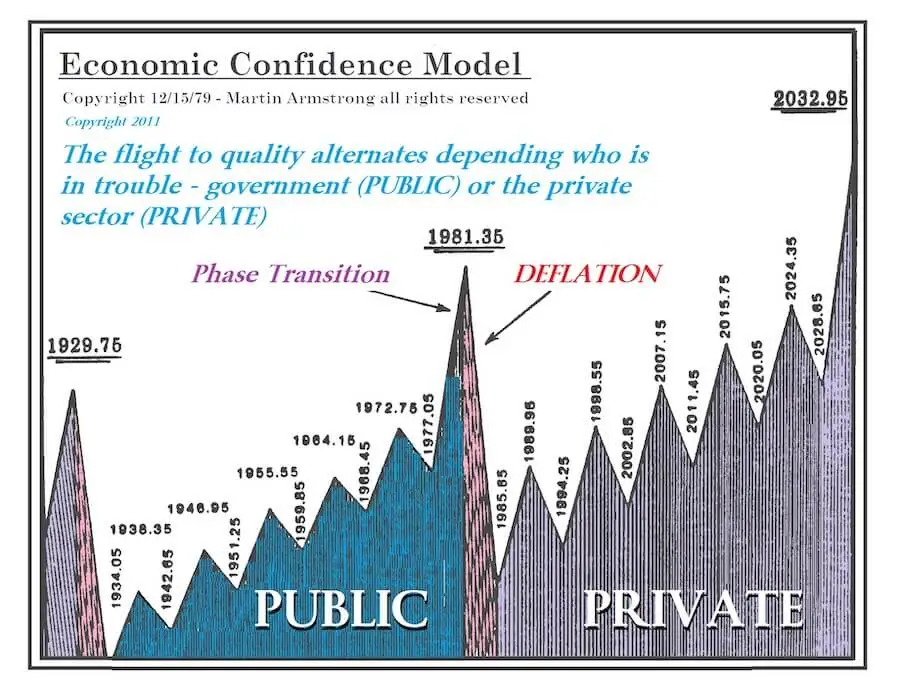
Using Cyclical Time to Predict Market Movements
Martin Armstrong is the founder of Armstrong Economics and has been one of the world’s leading economists and financial advisors for over 50 years.
In the 1980s, he developed one of the first natural language algorithms (AI) using extensive historical data on world financial markets, geopolitical events, currencies, precious metals, weather, wars, and other relevant fields.
The result is what he calls Socrates, a predictive AI engine that can analyze markets in real-time. Since the 80s, Armstrong has been using Socrates to predict world events and market movements accurately for multi-billion-dollar institutions and world governments.11Armstrong was imprisoned for 11 years on false charges because he would not share Socrates with the government. See the revealing documentary titled The Forecaster.
What makes Armstrong and his model unique in his field is that he understands the nature of cycles and the cyclical nature of time.
He discovered that virtually everything in the objective world follows specific patterns. Armstrong’s Socrates discovered, for example, an 8.6-year business cycle.
Every industry has its cyclical waves, with ascending and descending trends. Behind the appearance of apparent randomness are hidden patterns or attractors.
Having followed Armstrong’s commentary and predictions for well over a decade, it is most impressive.
Of course, Mr. Armstrong wasn’t the first person to come to this understanding of repeating cycles …
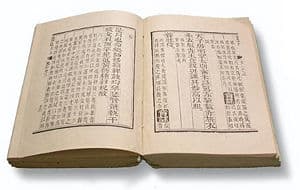
Jung on Oracles and the Acausal Principle
Jung discovered this understanding of the acausal principle behind synchronicity when he received a copy of the I Ching (translated by Richard Wilhelm).
The I Ching, or The Book of Change, is all about cycles and the acausal nature of life. It was believed to have been published by a sage king named Fu Xi during the ninth century BC, based on divination practices that were at least a thousand years older.
The I Ching is considered both a scientific text and a spiritual manual. It was often used as a divination tool to help predict future events (based on this understanding of continual cycles like Armstrong’s AI engine).
How to Use the I Ching for Divination
The I Ching contains 64 hexagrams. Each hexagram has a unique six-line combination along with a specific passage and commentary.
To “cast your hexagram,” you first pose a question that’s relevant to you (either write it down or hold it in mind).
Then, to consult the I Ching, the two most common methods for casting use traditional yarrow stalks or three coins.
Using the coin method (simpler), you toss the three coins six times, recording whether each toss is yang or yin (heads or tails). Yang and yin each have a numeric value. Then, you calculate each toss to determine the hexagram line type.
After casting six times, you have your primary hexagram and you’re ready to consult the I Ching for insights. (This article provides more specific details.)
Jung’s Observations Regarding the I Ching and Synchronicities
Jung observed that when his patients asked meaningful questions and consulted the I Ching, the resulting hexagram often provided relevant answers.
The insightful and meaningful results provided by the I Ching gave Jung further evidence of synchronicity and the acausal principle.
He wrote:12Carl Jung, Collected Works Volume 8, pg. 452.
The method like all divinatory or intuitive techniques is based on an acausal or synchronistic connective principle.
Jung observed similar encouraging results when his patients consulted Tarot cards.
Divination Ceremony and Dance, Brazil, by Zacharias Wagenaer (1630)
Modern Science versus Divination Practices
Various oracles and divination practices operate based on this synchronistic connective principle, including:
- I Ching
- Tarot
- Numerology
- Astrology
- Yijing (yarrow-stalk divination used in Confucianism)
Most of these ancient practices have existed for millennia.
The modern, “scientific mind” denigrates these oracles and divination practices as their operating mechanism exists outside their conventional scientific and psychological worldviews.
In one of her lectures, Marie-Louise von Franz contrasts the difference between the “modern, physical scientific experiment” and a “divination oracle” like the I Ching.13Marie-Louise von Franz, On Divination and Synchronicity, 1980, p. 50. (my emphasis)
In a physical experiment, chance is eliminated, one pushes it out on the border as far as possible and then [a] little remains which cannot be eliminated. That is annoying and then one says, “Oh well, that’s bad luck,” but the scientist says, “We can ignore that,” and that is the last condemning word. It is such a small matter that we can ignore it.
In the oracle, one takes a different, complementary approach, namely one takes chance as the center. You take a coin and throw it and the very chance that it falls heads up is the source of information.
So in one, chance is the source of information [divination], and in the other, chance is the disturbance or factor one eliminates [experiments].
Said another way, modern experiments omit the outliers while divination practices exclusively focus on them.
Experiments versus Oracles
Von Franz goes on to illustrate the difference between physical experiments and how oracles and synchronicity work:14Ibid. (Adapted)
| Experiments | Oracles |
|---|---|
| Eliminate chance | Make chance the center |
| Based on repetition | Based on one unique act |
| Based on probability calculus | Use the unique individual number as the source of information |
Reviewing these critical differences, it is clear why modern science struggles with the reality of synchronicities.
And, it’s not surprising that many in the academic community would label the acausal principle a “pseudoscience.”
Ultimately, the oracle-synchronistic understanding is not at odds with the material science viewpoint. As we saw above, they represent complementary principles.15Carl Jung, Letters Volume II, pp. 425-426
However, although these concepts are complementary, the principle of synchronicity remains 180 degrees off from modern science’s prevailing worldview and way of approaching truth.
Photo by Nick Design
Synchronicity and Archetypes
For Jung, archetypes are “the living system of reactions and aptitudes that determine the individual’s life in invisible ways.”16C.G. Jung, The Structure and Dynamics of the Psyche, Collected Works, Volume 8, 1970.
He perceived these primordial images as fundamental units of the human mind. These images shape virtually all human behavior, residing in what he referred to as the collective unconscious (a universal repository within the collective psyche).
As Marie-Louise von Franz explains:17von Franz, Archetypal Dimensions of the Psyche, 1997.
The archetypes are inherited dispositions, which cause us to react in a typical way to basic human problems, inner or outer.
From Jung’s perspective, all synchronistic events involve archetypes. He writes:18Carl Jung, Letters Vol. II, pp. 43-47.
Where an archetype prevails, we can expect synchronistic phenomena, i.e., acausal correspondences, which consist in a parallel arrangement of facts in time.
Both archetypes and synchronistic events represent psychic phenomena. They are “events” unfolding in the subjective, nonphysical landscape that can influence, inform, and coincide with the external, objective world.
One example Jung gives is what can happen when an individual’s life is threatened:19Carl Jung, Conversations with C.G. Jung, pg. 51.
When someone is under a grave threat, and the archetypes are constellated, synchronistic situations can arise—events that are independent of him, existing in the outside world.
In this heightened state, if the individual is alert and receptive, the Universe is likely to illuminate a meaningful sign.
Three Realms of Existence (Taoism)
The Energetic Nature of Synchronistic Events
Let’s back up for a moment so we can better appreciate what’s happening when meaningful coincidences unfold.
To do so, we need to clarify a few concepts found in Taoism and compare them to Jungian explanations.
The Three Realms of Existence
In Taoist thought, they present three realms or levels of existence:
- The Physical or Earthly Realm
- The Energetic Realm
- The Heavenly realm
These three realms coincide with the Three Treasures we’ve addressed in numerous previous guides:
- Jing: vitality or life essence (associated with the physical body)
- Qi: life force energy (associated with the energetic body)
- Shen: spirit or consciousness (associated with the consciousness body)
The goal of Taoist practices is to transmute these Three Treasures within the body into higher consciousness, and eventually realize emptiness, thereby bringing “earth and heaven” into balance within the individual.
Jungian Psychic Energy
While causality is an observable phenomenon within the physical realm, synchronism (the acausal principle) involves the energetic and/or heavenly realm of consciousness itself.
Jung and the Jungians intuited the energetic nature behind this acausal principle.
In fact, to Jung, things like archetypes, dreams, oracles, fairytales, and myths all carry an energetic signature, which he and other Jungians refer to as psychic energy.20M. Ester Harding, Psychic Energy: Its Source and Its Transformation, 1973.
As von Franz explains,21Franz, On Divination and Synchronicity, 81.
An archetypal tale, like a dream, represents a self-representation of the flow of psychic energy.
This flow of psychic energy relates to the energetic realm, which operates on nonlinear and nonlocal principles (more consistent with quantum mechanics).
From a Jungian point of view, the entire process of depth psychology represents an interpretation of psychic energy flow.
Again, from von Franz:22Ibid.
We look at dreams, therefore, as an energic process, as a visualization of the flow of the energy of the unconscious, and the same is true for mythological dreams, for fairytales and myths—the archetypal forms of this manifestation. One can always look at them from an energic standpoint.
Synchronicity is a Bridge Between Realms
So, perhaps now it’s easier to appreciate better how inner work—the exploration of one’s psyche—relates to the principles behind synchronicity.
Jung states:23Carl Jung, Letters Vol. II, pp. 445-449.
In so far [as] synchronistic events include not only psychic but also physical forms of manifestation, the conclusion is justified that both modalities transcend the realm of the psychic and somehow also belong to the physical realm.
Here we see Jung acknowledging the interconnected nature of matter (earth and physical) and mind (both energetic and consciousness).
Note: Although I don’t get the sense that Jung (or the Jungians) had an accurate understanding of Taoist thought, he was undoubtedly aware that realms beyond the physical exist and interface with one another.
The Experience of Synchronicities
For those with a certain level of energetic sensitivity, who are more connected to their subtle energy body, there’s a visceral sensory experience that occurs in the presence of meaningful coincidences.
There’s often a tingling sensation, like an extra charge of qi energy coursing through you, especially up the spine and into the brain region.
An individual may also perceive a flash of light in the region associated with the third eye or at the crown of the head.
That is, “psychic energy” appears to have physical correlates within the human body.
The overall experience of authentic synchronicities has a decidedly magical feel to it.
Even if you were divorced from a sense of wonder before the experience, this essential quality will resurface after it.
Photo by Max Letek
What is the Meaning of Synchronicities?
Now, the question many readers may ask: What’s the significance or true meaning of these synchronicities?
Since synchronistic events involve our personal psyche (subjective experience), we can’t derive an absolute or objective meaning from them.
That is, synchronicities require interpretations to extract any personal meaning or significance. For this reason, as we saw above, we can’t efficiently study synchronistic events using traditional experiments; you can only witness them.
How someone interprets the meaning of these events is up to the individual. One’s interpretation will be dependent on or influenced by their:
- Prevailing beliefs and worldviews
- Current internal tensions and life circumstances
- Level of intuition, sensitivity, and self-awareness
Discernment and self-analysis are required to infer potential personal meaning from these events.
The Spiritual Meaning of Synchronicity
For Jung, the ultimate interpretation of synchronicities involved the numinous (spiritually elevated or sublime).
Jung writes:24Carl Jung, Conversations with C.G. Jung, pg. 51
We should be particularly watchful when synchronous events occur for a numen is then in sight. In a certain mood one notices that the crows fly towards the left. When an archetypal event approaches the sphere of consciousness, it also manifests itself in the outer life.
In this regard, a synchronistic event can be an imminent precursor for something potentially transformational within the individual’s psyche.
We need only pay attention inwardly, listen, and remain receptive to what unfolds next.
The Hindu Interpretation of Synchronicity
From the Hindu perspective, everything is Brahman (or Brahma).
Brahman is God as the Creator, representing the totality of this manifest reality.
From a nondualist standpoint, one’s consciousness itself is Brahman.
So from this spiritual viewpoint, synchronicity can be seen as a natural phenomenon manifesting through consciousness.
Here, it’s not so much that there’s an “acausal connection” between “mind and matter” as these are perceived as arbitrary concepts of the mind.
Instead, it’s all just consciousness that transcends the physical and energetic levels of existence, which are perceived as Maya (illusion).
How to Use Synchronicities for Personal Growth
So, can we leverage meaningful coincidences for our benefit?
The significance of observing synchronicities especially comes into play when:
- Doing inner work (self-healing)
- Seeking spiritual direction
- Making real-world decisions
Let’s go through each one.
1 – Doing Inner Work (Self-Healing)
Inner work is the process of exploring one’s psyche with methods including:
- Shadow work
- Dream analysis
- Active imagination
- Self-reflection
- Spontaneous journaling
- Creative self-expression
- Various other methods
Inner work is a means of connecting your conscious mind with your unconscious. The goal of which is to bring unconscious material to the surface, build consciousness, and heal the splits within one’s psyche.
While the conscious mind operates mainly in the objective, earthly realm, the unconscious connects to the energetic and “heavenly” realm of consciousness itself.
You may discover that as you acknowledge these synchronistic events, a stronger creative impulse comes alive within you (which further supports self-healing).
Pay Close Attention to Your Dreams
If you do nothing else but pay closer attention to your dreams by recording them each morning, you’re already beginning to constellate psychic energy from a Jungian perspective.
As Jung notes:25C.G. Jung, Dream Analysis: Notes of the Seminar Given in 1928–1930, 1984, p. 45.
The more we busy ourselves with dreams, the more we shall see such coincidences—chances.
And this is observably valid. The more you turn your attention toward your inner world, the more the Self begins to communicate with you through the three realms.
In this way, synchronicities can become essential markers for self-healing.
2 – Seeking Spiritual Direction
Synchronicities can also be a powerful aide when you’re on a spiritual journey.
Sometimes you get confused or uncertain and are looking for direction.
In these moments, you might, for example:
- Pose a question to your subconscious in the evening before going to bed
- Sit in meditation and pray for guidance
- Consult an oracle like the I Ching
- Pay attention to your dreams
Then, be patient and stay on the lookout for a meaningful sign.
The key is to put forth the question with both sincerity and faith.
Synchronicities and Spiritual Growth
As you continue along your path of spiritual growth, synchronistic events can begin happening rapidly and frequently.
Marie-Louise von Franz explains why this is so:26Franz, On Divination and Synchronicity, 21.
[The] larger our consciousness is, and the more it develops, the more we get hold of certain aspects of the spirit of the unconscious, draw it into our subjective sphere, and then call it our own psychic activity of our own spirit.
As we build consciousness and expand our awareness, the bridge between the three realms gets stronger.
3 – Making Real World Decisions
Of course, the benefits of synchronicities aren’t exclusive to the psychic or spiritual dimension.
Meaningful coincidences can help inform many real-world decisions, including:
- Career changes
- Choosing a partner
- Visiting a particular place
- Reading a specific book
- Visiting a website
- Searching for a specific topic online
Using synchronicities to inform decision-making is done in a similar way to that described above.
Essentially, you put forth your question with sincerity and faith, and then pay attention.
One Last Example of Synchronicity
Here’s one more example that happened to me while writing this guide.
I had been thinking about acupuncture points lately, as I instinctively found myself focusing on specific regions of the body. So, I pulled a book on meridian theory from my shelf to reference when I had time.
On a work break, I was listening to a market report. While listening, I spontaneously picked up the meridian book, and just as I did, the analyst said the phrase “pressure points.”
This analyst was speaking about geopolitics and world events; he was using “pressure points” in a completely different context.
Yet, for me, this was a synchronistic event, a meaningful coincidence. It confirmed my instinctual decision, leading me to invest additional psychic energy in following it.
Sunflower Closeup | Photo by Rodolfo Mari
Unlocking the Power of Synchronicity
Above all else, synchronicity is an observable principle within the physical and psychic (energetic) realms.
Meaningful coincidences can be instructive and insightful indicators of our life decisions and overall direction.
Understanding the principles behind synchronicity, including acausality and nonlinearity, can transform our understanding of reality and lead to a more profound appreciation of the nature of existence and time.
As von Franz observes:27Franz, On Divination and Synchronicity, 84.
For everything there is the right moment, the right constellation for action, and to act too early or too late destroys the whole possibility. We do not consider that enough. We think too much in abstract terms, either that a thing is good or bad, and we do not think enough from the feeling standard of the special time circumstances in which we act, for our ethical deeds do depend on time.
When you first begin experiencing synchronicities, they can feel extremely personal. After all, it’s an event unfolding in the external world that has meaningful significance to you.
However, over time, the experience of synchronicities becomes increasingly impersonal. These occurrences become less about you (from the ego’s viewpoint) and more an expression of the interconnectedness of all things, and on multiple levels.
Regardless, it’s as if, in that moment of meaningful chance, the Universe is speaking to you. The question is:
Are you ready to listen?
Books on Jungian Synchronicity
Jung’s book Synchronicity is a section of volume 8 of his Collected Works. Marie-Louise von Franz’s On Divination and Synchronicity is chock-full of insights as well.
Synchronicity: An Acausal Connecting Principle
C. G. Jung
On Divination and Synchronicity: The Psychology of Meaningful Chance
Marie-Louise von Franz
Jung, Synchronicity, & Human Destiny: Noncausal Dimensions of Human Experience
Ira Progoff
Read Next
The Individuation Process: A Beginner’s Guide to Jungian Psychology
The Puer Aeternus Archetype: A Deep Decoding of Peter Pan Syndrome



